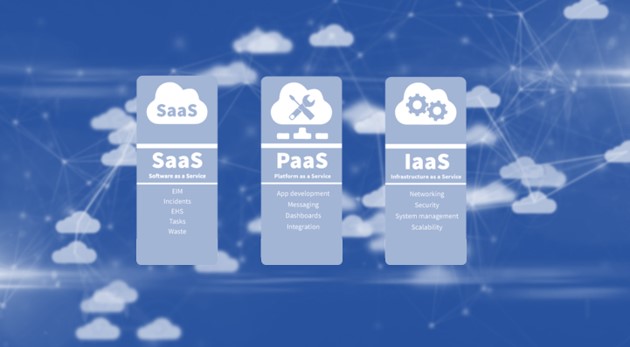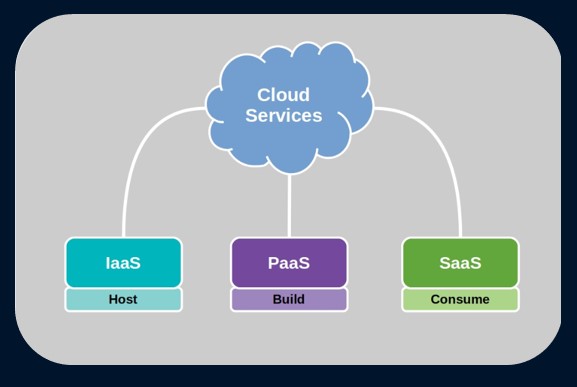Understanding IaaS, PaaS, and SaaS in Cybersecurity
September 10, 2024

In the realm of cloud computing, Infrastructure-as-a-Service (IaaS), Platform-as-a-Service (PaaS), and Software-as-a-Service (SaaS) have transformed how businesses manage their IT infrastructure, applications, and services. Each model offers distinct advantages and considerations from a cybersecurity standpoint. Let’s delve into the pros and cons of each.
Infrastructure-as-a-Service (IaaS)
Definition: IaaS provides virtualized computing resources over the internet, including virtual machines, storage, and networking capabilities. Users typically manage the operating systems, applications, and data running on the infrastructure.
Pros:
- Scalability and Flexibility: Easily scale resources up or down based on demand, offering flexibility in resource allocation.
- Control: Users have greater control over the infrastructure configurations, allowing for customization and specific security implementations.
- Disaster Recovery: Many IaaS providers offer robust disaster recovery options and redundancy, enhancing data resilience.
Cons:
- Responsibility: Users are responsible for securing applications, data, and operating systems hosted on the infrastructure, which requires expertise in cybersecurity.
- Complexity: Managing security configurations, updates, and compliance across diverse IaaS environments can be complex and resource intensive.
- Potential Misconfigurations: Misconfigurations in security settings can expose vulnerabilities, leading to data breaches or unauthorized access.

Platform-as-a-Service (PaaS)
Definition: PaaS provides a platform allowing customers to develop, run, and manage applications without dealing with the underlying infrastructure. It typically includes development tools, databases, middleware, and runtime environments.
Pros:
- Rapid Development: Accelerate application development and deployment with built-in development tools and frameworks.
- Scalability: PaaS platforms often offer automatic scaling capabilities, ensuring performance and availability during spikes in demand.
- Reduced Maintenance: Providers manage infrastructure updates, security patches, and maintenance, reducing the burden on users.
Cons:
- Vendor Lock-in: Dependence on specific PaaS platforms may limit flexibility and interoperability with other services or environments.
- Limited Control: Less control over underlying infrastructure and security configurations may hinder customization for specific security requirements.
- Data Location Concerns: Compliance with data residency and regulatory requirements can be challenging if data is stored in different geographical locations.
Software-as-a-Service (SaaS)
Definition: SaaS delivers applications over the internet on a subscription basis, eliminating the need for users to install, manage, and maintain software locally.
Pros:
- Accessibility and Convenience: Access applications from any device with an internet connection, promoting collaboration and productivity.
- Automatic Updates: Providers manage updates, patches, and security enhancements, ensuring users have the latest protections against vulnerabilities.
- Scalability: Easily scale usage and features based on business needs without infrastructure concerns.
Cons:
- Data Security Concerns: Relinquishing control over data to SaaS providers raises security and privacy concerns, especially for sensitive or regulated data.
- Integration Challenges: Integration with existing IT systems or other SaaS applications can be complex and require careful planning.
- Service Dependence: Downtime or disruptions in the SaaS provider’s service can impact business operations and availability.

Choosing between IaaS, PaaS, and SaaS involves evaluating your organization’s specific needs, security requirements, and resources. While each model offers unique benefits in terms of scalability, flexibility, and maintenance, cybersecurity considerations are paramount. Organizations must adopt robust security practices, including data encryption, access controls, regular audits, and compliance checks, regardless of the chosen cloud service model. By understanding the pros and cons outlined above, businesses can make informed decisions to optimize both their operational efficiency and cybersecurity resilience in an increasingly digital landscape.
Have Any Question?
Call or email Cocha. We can help with your cybersecurity needs!
- (281) 607-0616
- info@cochatechnology.com




